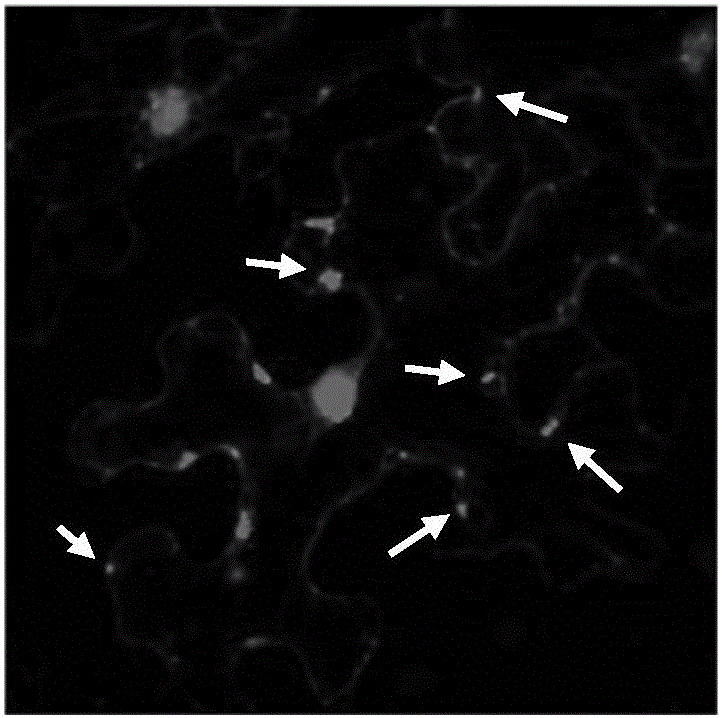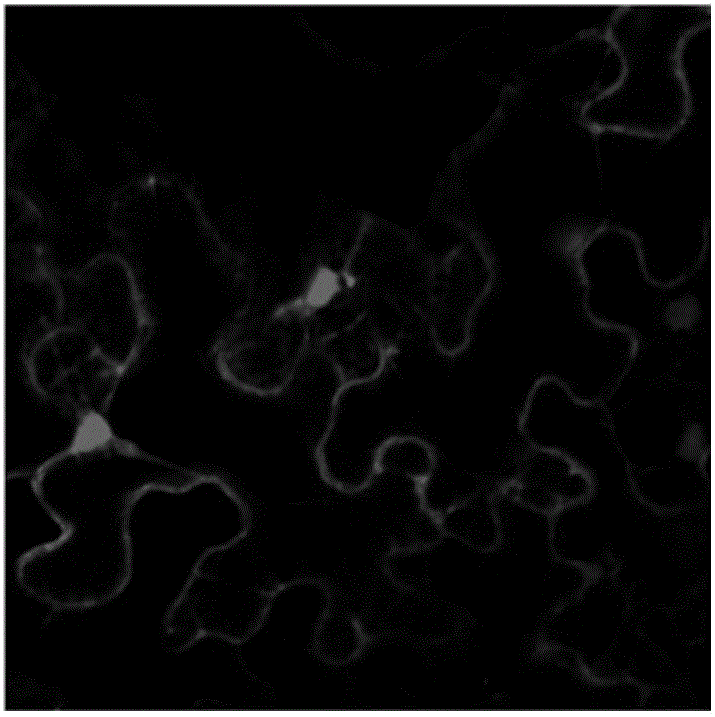Cloning and application of tomato ATG8f gene
A tomato gene technology, applied in the field of tomato ATG8f gene cloning, can solve the problems of decreased pollen vigor, affecting yield and quality, falling flowers and fruits, etc., and achieves the effect of rapid detection
- Summary
- Abstract
- Description
- Claims
- Application Information
AI Technical Summary
Problems solved by technology
Method used
Image
Examples
Embodiment 1
[0060] Cloning of Tomato ATG8f Gene
[0061] 1. Tomato Total RNA Extraction
[0062] Adopt PlanttotalRNAextractionkit (TIANGEN) to extract the total RNA of young tomato leaves, and its steps are:
[0063] (1) Take 0.1g of leaves and grind them in liquid nitrogen, add 1mL of lysate, and then process them with a homogenizer;
[0064] (2) Place the homogenized sample at 15-30°C for 5 minutes to completely separate the nucleic acid-protein complex;
[0065] (3) Centrifuge at 12,000 rpm for 5 minutes at 4°C, remove the supernatant, and transfer to a new RNase-free centrifuge tube.
[0066] (4) Add 200 μL of chloroform, cover the tube cap, shake vigorously for 15 seconds, and place at room temperature for 3 minutes;
[0067] (5) Centrifuge at 12,000rpm for 10min at 4°C. The sample will be divided into three layers: a yellow organic phase, an intermediate layer and a colorless aqueous phase. RNA is mainly in the aqueous phase, and the volume of the aqueous phase is about the lysat...
Embodiment 2
[0085] GFP gene clone
[0086] Design specific primers (GFP-F and GFP-R in Table 2) according to the GFP sequence, and add a restriction enzyme site (AscI) to the GFP-F primer, and then amplify the GFP gene to obtain PCR2.
[0087] The PCR reaction system is as follows:
[0088]
[0089] PCR reaction condition setting:
[0090]
[0091] Table 2 GFP gene amplification primer sequence list
[0092]
Embodiment 3
[0094] GFP-ATG8f vector construction
[0095] 1. PCR amplification
[0096] GFP-F and SlATG8f-R were used as primers, and PCR products 1 and 2 were used as templates to amplify, purify, digest, and connect to pFGC1008 vector.
[0097] The PCR reaction system is as follows:
[0098]
[0099] PCR reaction condition setting:
[0100]
[0101] 2. Cut glue recycling
[0102] After the PCR reaction was completed, the target band was recovered and purified according to the DNA Agarose Gel Recovery Kit (TIANGEN), and the specific steps were as follows:
[0103] (1) Column equilibration step: add 500 μL of equilibrium solution BL to the adsorption column CA2 (the adsorption column is placed in the collection tube), centrifuge at 12,000 rpm (~13,400×g) for 1 min, pour off the waste liquid in the collection tube, and the adsorption Column CA2 is put back in the collection tube again;
[0104] (2) Cut out a single target DNA band from the agarose gel (cut off the excess part as...
PUM
 Login to View More
Login to View More Abstract
Description
Claims
Application Information
 Login to View More
Login to View More - R&D
- Intellectual Property
- Life Sciences
- Materials
- Tech Scout
- Unparalleled Data Quality
- Higher Quality Content
- 60% Fewer Hallucinations
Browse by: Latest US Patents, China's latest patents, Technical Efficacy Thesaurus, Application Domain, Technology Topic, Popular Technical Reports.
© 2025 PatSnap. All rights reserved.Legal|Privacy policy|Modern Slavery Act Transparency Statement|Sitemap|About US| Contact US: help@patsnap.com



